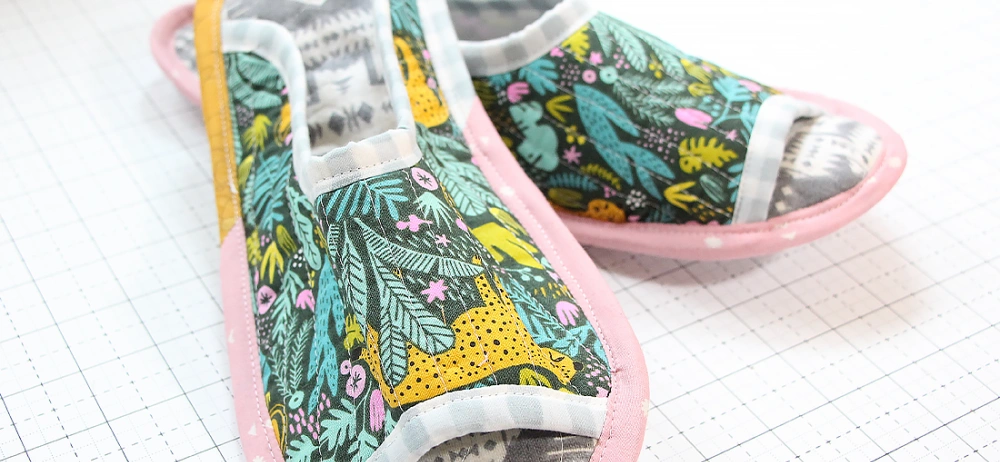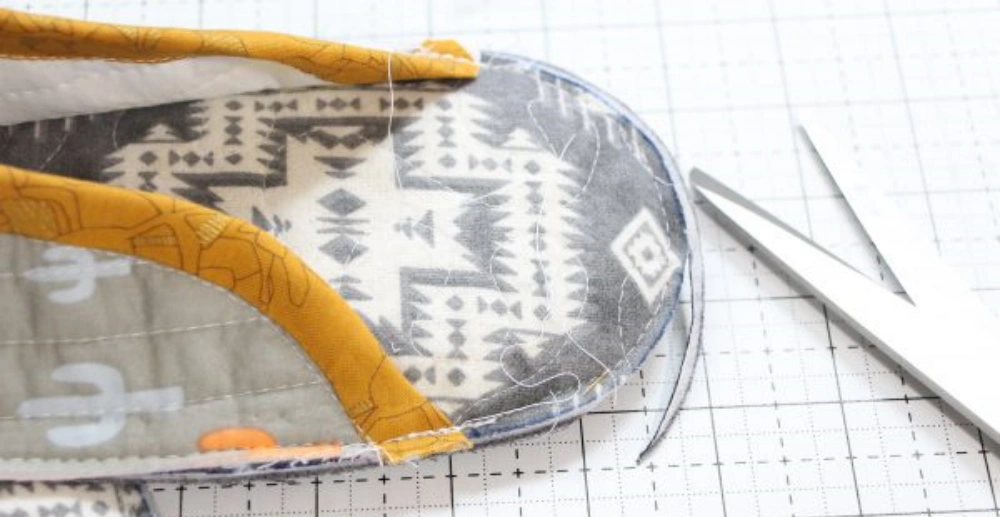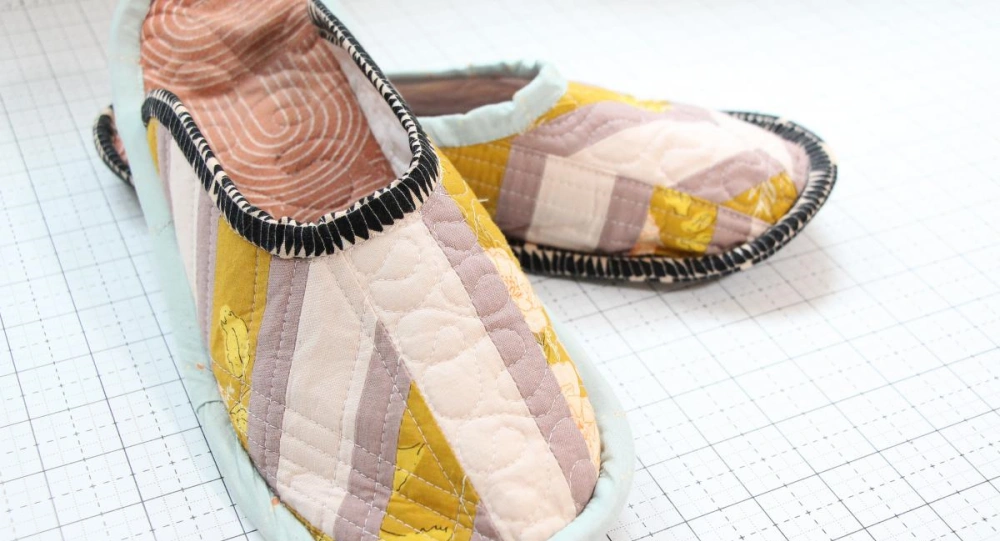You can make your own cozy slippers at home, even if you’ve never sewn before. Quilted slippers feel soft and keep your feet warm. You get to pick your favorite colors and patterns, so every pair feels personal.
Fanda Fabrics gives you high-quality materials that make every step easier. Ready to learn how to make quilted slippers? Grab your supplies and let’s get started!
Key Takeaways
Gather quality materials like cotton or silk fabric for comfort and durability. Using high-quality supplies makes your slippers last longer.
Follow a step-by-step guide to cut, assemble, and sew your quilted slippers. This ensures a perfect fit and a polished look.
Customize your pattern for a better fit. Trace your foot to create a template that suits your size and comfort needs.
Use a walking foot on your sewing machine for even stitching. This helps manage thick layers and prevents puckering.
Add personal touches with different fabrics and patterns. This makes each pair unique and reflects your style.
Materials to Make Quilted Slippers

Before you start sewing, you need to gather the right materials to make quilted slippers. Picking quality supplies makes your project easier and helps your slippers last longer. Let’s break down what you’ll need.
Fabric Choices
You want fabric that feels soft and looks great. For quilted slippers, natural materials like cotton or silk work best. Synthetic fabrics are also popular for their easy care. Here’s a quick look at your options:
Fabric Type | Advantages | Disadvantages |
|---|---|---|
Natural Materials | Long-lasting, extremely comfortable once broken in, and amazing breathability | More expensive, requires careful maintenance, and is not suitable for wet conditions |
Synthetic | Affordable, machine-washable, similar warmth and coziness to natural materials | May not be as durable, can lack absolute softness and breathability |
You can try Fanda Fabrics’ Double-Sided Quilted Fabric for a reversible look. Their Cotton Quilting Fabric gives you softness and durability, perfect for slippers you’ll wear every day.
Batting Options
Batting adds warmth and structure to your quilted slippers. You have several choices, each with its own feel and level of coziness:
Batting Type | Characteristics | Warmth Level | Structure Impact |
|---|---|---|---|
Cotton | Warm, soft, crinkly look after washing, can have scrim for stability. | High | Good drape, can be pre-washed to reduce crinkling. |
Polyester | Fluffier, higher loft, does not shrink, less warm than cotton. | Moderate | Stiffer drape, good for tied quilts. |
Cotton Blends | Combines qualities of cotton and polyester, popular among quilters. | Moderate | Good balance of softness and stability. |
Lightweight, warm, higher loft than cotton, shows quilting stitches well. | High | Good for three-season quilts. | |
Bamboo | Similar to cotton, eco-friendly, it can be more expensive. | Moderate | Comparable loft and feel to cotton. |
Fusible | Comes with glue for easy application and can be made from various materials. | Varies | Practical for small projects, less so for larger ones. |
If you want slippers that feel luxurious, try Fanda Fabrics’ Silk Quilt Batting. Silk batting is lightweight, soft, and hypoallergenic, making your quilted slippers extra comfortable.
Basic Tools
You don’t need fancy equipment to make quilted slippers. Here’s a simple checklist:
Fabric scissors
Sewing machine or needle and thread
Pins or clips
Measuring tape or ruler
Slipper pattern (you can draw your own)
Iron
Tip: Using double-sided quilted fabric from Fanda Fabrics saves you time because you don’t need extra lining.
You can find all these materials to make quilted slippers at Fanda Fabrics. They offer high-quality quilting supplies, innovative designs, and have earned a reputation for excellence. Their products are available worldwide, so you can shop with confidence.
How to Make Quilted Slippers: Steps and Tutorial
Ready to dive in? Here’s a step-by-step guide on how to make quilted slippers that are comfy, stylish, and unique. This tutorial breaks down the process so you can follow along, even if you’re new to sewing. Let’s get started!
Cutting Fabric and Pattern
The first step in making quilted slippers is preparing your fabric and pattern. You want to make sure every piece fits together perfectly, so take your time here.
Choose Your Pattern:
You can use a printable quilted slippers pattern or draw your own by tracing around your foot, adding about ½ inch for seam allowance. If you want a custom fit, try making a paper mock-up first.Prepare Your Fabric:
Pre-wash your fabric if it’s cotton or silk. This helps prevent shrinkage later. If you use Fanda Fabrics’ double-sided quilted fabric, you’ll save time because you won’t need extra lining.Cutting Tips:
Lay out your fabric flat. Place the pattern pieces on top and pin them down. Remember to flip the pattern for the second slipper so you get a left and right foot. Cut out all pieces before you start sewing.
Tip:
Beginners often forget to adjust the pattern size for pre-washed fabrics. Make sure to add a little extra length at the toe and heel.
Here’s a quick look at common mistakes and how to avoid them:
Mistake Description | How to Avoid It |
|---|---|
Not adjusting pattern size for pre-washed fabrics | Add extra length to the toe and heel before cutting. |
Failing to prepare all pieces before starting | Cut and organize all panels before you sew. |
Cutting mirrored pieces incorrectly | Flip the pattern for the second foot to get a matching pair. |
Assembling Panels

Now you’ll start putting your quilted slippers together. This step is where your project starts to take shape.
Lay Out Your Panels:
Arrange the upper, insole, and sole pieces. If you’re using double-sided quilted fabric, you can choose which side you want to show on the outside.Sew the Panels:
Use a sewing machine or hand stitch to join the upper panels. For best results, use a walking foot on your sewing machine. This helps feed the layers evenly and keeps everything flat.Check Your Work:
After sewing each section, pause and check the alignment. Make sure the seams are smooth and the panels line up.
Technique | Why It Works |
|---|---|
Walking foot on the sewing machine | Keeps layers flat and prevents puckering. |
Adjusting tension for thickness | Prevents uneven stitching and bunching. |
Reinforcing high-stress areas | Adds durability to toe and heel seams. |
Quality checks after each section | Catches mistakes early and keeps your project on track. |
Note:
If you use Fanda Fabrics’ double-sided quilted fabric, you can skip adding a separate lining. This makes the process faster and easier for beginners.
Sewing Sole and Upper
This is the most important part of how to make quilted slippers. You’ll join the upper and sole to create a sturdy, comfortable fit.
Pin the Sole and Upper:
Line up the edges and pin them together. Make sure the right sides are facing each other.Sew Around the Edge:
Use a zigzag stitch to sew around the insole. This gives a strong seam that holds up to daily wear. For extra strength, use 100% polyester thread and a stitch length of about 3.5mm.Check the Fit:
Turn the slipper right side out. Try it on to check the fit. If it feels bulky, trim the seam allowance or adjust the seam.Add a Cuff (Optional):
For a snug fit, cut a binding piece slightly smaller than the opening. Stitch it to the top edge. If the cuff feels loose, add a bit of elastic.
Tip:
Fold seams to the inside and pin them well before stitching. For a clean look, stitch ‘in the ditch’ from the inside to hide the seam.
Finishing Touches
You’re almost done! The final steps make your pair of quilted slippers look polished and help them last longer.
Finish the Edges:
Prevent fraying by using a serger or overcasting stitch on your sewing machine. You can also wrap bias tape around the edges for a neat, colorful finish.
Finishing Technique | What It Does |
|---|---|
Sergers | Give a durable, professional edge finish. |
Overcasting stitches | Secure edges and mimic serger results. |
Bias tape | Adds color and prevents fraying for a stylish look. |
Final Quality Check:
Inspect your slippers for any loose threads or uneven seams. Make sure the stitching is secure, especially at the toe and heel.Enjoy Your Slippers:
Slip on your new quilted house slipper and enjoy the comfort! You’ve just completed all the steps to sew quilted slippers from start to finish.
Callout:
Using Fanda Fabrics’ double-sided quilted fabric makes the process easier and gives your slippers a professional look. Their cotton quilting fabric and silk quilt batting add softness and durability, so your slippers feel as good as they look.
Now you know how to make quilted slippers from scratch. This tutorial covers every step, from cutting the pattern to finishing the edges. With a little practice, you’ll be making custom slippers for yourself and your loved ones in no time!
Tips for Beginners

Pattern Customization
You want your slippers to fit just right, so don’t be afraid to customize with your own fabric choices and measurements. Start by tracing your foot or a comfortable shoe onto paper. This gives you a custom template. Measure around the top of the sole to find where the upper should start.
Next, measure from the middle of the sole to the top of the arc. Draw and cut out your pattern, adjusting for different sizes as needed. Customizing the pattern helps you avoid discomfort from standard sizes and lets you add extra padding or anti-skid fabric for more comfort and safety.
When you make your own pattern, you get slippers that feel like they were made just for you.
Sewing Machine Tips
Sewing thick layers can feel tricky, but you can make it easier with a few simple tricks. Use pre-quilted fabric to save time and effort. If you want extra cushioning, fuse a thin craft fleece to the main slipper piece and insole. For the sole, try adding an anti-skid gripper fabric to keep your slippers safe on smooth floors.
When sewing, use a walking foot and quilt the layers with straight lines for a neat finish. If you run into problems like thread bunching, skipped stitches, or fabric not feeding, check your machine’s threading, tension, and needle.
Clean your machine often and use the right needle for thick fabrics. These steps help you avoid common sewing headaches.
Comfort and Fit
Making something handmade means you can adjust every detail for comfort. Try adjustable closures or different widths if your feet need a special fit. Add arch support if you want more stability.
A thick layer of quilt batting between the outer and lining layers makes your slippers feel warm and cozy, almost like a duvet for your feet. Sandwiching materials between the shell and lining adds body and warmth, which is perfect for chilly days.
With these tips, your handmade slippers will fit well and feel great every time you slip them on.
Conclusion
You can make your own quilted slippers and enjoy every step of the process. When you use premium materials from Fanda Fabrics, you get comfort and style that lasts. Many crafters love how making slippers lets them show off their creativity and feel proud of their work.
You get to customize each pair to match your style.
Making something unique brings real joy and satisfaction.
The process helps boost your well-being.
Try mixing different fabrics and patterns next time. Many people find that using soft fleece, cotton panels, or even faux suede makes slippers both cozy and beautiful.
Playing with new materials adds comfort and visual appeal.
Even if you face small challenges, you’ll find the project rewarding.
Handmade comfort is special. Every time you slip on your slippers, you’ll feel the difference that comes from making something just for you.
FAQ
How do I wash my quilted slippers?
You can machine wash your slippers on a gentle cycle with cold water. Air-dry them flat for the best results. Avoid using bleach or high heat. This keeps your slippers soft and helps them last longer.
Can I make quilted slippers without a sewing machine?
Yes! You can sew quilted slippers by hand. Use a strong needle and sturdy thread. Hand stitching takes more time, but you still get great results. Just make sure your stitches are tight and even.
What if my slippers turn out too big or too small?
Don’t worry! If your slippers feel too big, add extra padding or wear thicker socks. If they’re too small, try adjusting your pattern next time. Making a paper mock-up first helps you get the right fit.
Which fabric works best for beginners?
Cotton quilting fabric is a great choice. It’s easy to cut and sew. Fanda Fabrics’ double-sided quilted fabric also makes things simple because you don’t need extra lining. Both options help you get started quickly.
How can I make my slippers non-slip?
Add anti-skid fabric or sew on rubber dots to the sole. You can also use puff paint for extra grip. This keeps you safe on smooth floors and gives your slippers a professional finish.
